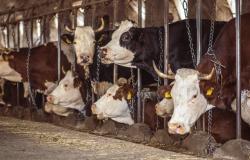The Serenissima is one of the most beautiful and unique cities in the world. Totally immersed in its lagoon and connected to the mainland via a single road, it is divided into six historic neighborhoods called sestieri. Each district has its own identity and particularities, given that the organization of the neighborhoods is certainly peculiar when compared to other Italian cities. One curiosity above all: house numbers in Venice are given to the neighborhood and not to the individual street. Find out everything you need to know about Venetian districts and why they are called that.
San Marco: the most famous in Venice
The San Marco district, located in the beating heart of Venice, is without a doubt the most famous and visited by the millions of tourists who are fascinated by its beauty every year. The name San Marco obviously derives from the square and the basilica of the same name, one of the most representative symbols of the city, dedicated to the patron saint of Venice, but also an emblem of the power of the Serenissima.
Among the things to see here we must mention Piazza San Marco, the Doge’s Palace, the Correr Museum and the Fortuny Museum. In addition to cultural destinations, San Marco also offers luxury shopping opportunities with its exclusive boutiques and historic cafés where you can enjoy an excellent coffee. Finally, too the island of San Giorgio Maggiore belongs to the San Marco district: in the main basilica you will find beautiful works by Tintoretto.
Cannaregio: the authentic soul of the city
The Cannaregio district is also very well known, as it extends from the station to the Rialto Bridge. Its name has ancient origins and probably derives from the reeds that abounded in this area. Cannaregio is perhaps the most inhabited district by Venetians and therefore, in a certain sense, the most authentic.
Cannaregio is also the district that hosts the famous Jewish ghetto, the oldest in Europe. Among the attractions not to be missed are also the church of the Madonna dell’Orto, with its works of art, the Church of Santa Maria dei Miracoli and the Giorgio Franchetti Art Gallery. For those who want to experience the typical Venetian atmosphere and perhaps live in Venice, Cannaregio is definitely the right place.
Dorsoduro: the university area
The Dorsoduro district is located in the south-western part of Venice and represents the cultural and university soul of the city. The name “Dorsoduro” derives from the nature of the land on which it is built, more solid and “harder” than other marshy areas. This neighborhood is known for hosting historic venues of Ca’ Foscari University, IUAV and the Academy of Fine Artswhich attract students and artists from all over the world.
One of the main things to see is the Peggy Guggenheim Collection, one of the most important contemporary art museums in Europe. Another unmissable place is the Basilica of Santa Maria della Salutea masterpiece of Venetian baroque architecture built as a votive offering for the liberation of the city from the plague.
Castello: the Biennale district
The Castello district certainly is one of the largest in the city, since it starts from San Marco, passes through the Arsenal of Venice and reaches the city’s stadium. Visiting the Castle allows you to discover lesser-known corners of Venice but full of charm.
Among the main attractions there is certainly the Arsenal, the focal point for the military power of the Serenissima, but also the Giardini della Biennale, green oases that host the important art and architecture exhibition. Finally, we must mention the Basilica of San Pietro di Castello, the ancient patriarchal seat of the city before San Marco. Finally, for those looking for curiosities about the city, it is worth visiting the famous Acqua Alta Bookshop, one of the most fascinating in the world.
San Polo: the liveliest area of Venice
The San Polo district, which also includes the Rialto Bridge and the famous market, largely overlooks the Grand Canal. The name “San Polo” derives from Campo San Polo, the largest in the city after Piazza San Marco and the Church of San Polo.
San Polo is therefore a district that enchants with its architecture and its historic markets. Without considering that this is the perfect place to have an aperitif in the many typical bacari. Furthermore, among the things to see is the Basilica dei Frari, which houses the funerary monuments of Canova, Titian and four Doges, i.e. the heads of state of the Serenissima.
Santa Croce: the “gate” of Venice
The Santa Croce district is the area where everyone arrives from the mainland by car. Here it is Piazzale Roma, the station and Tronchetto, which is an island where it is possible to park cars. It is not an overly touristy neighborhood, so it can be the ideal place to understand what the streets of Venice are like and settle in before arriving on foot in the central neighborhoods.
In Santa Croce there are also the Museum of Palazzo Mocenigo and Ca’ Pesaro, home to the International Gallery of Modern Art and the Museum of Oriental Art. Talking about churchesHowever, it is worth discovering the Church of the Scalzi and the Church of San Stae.
Tags: curiosity called idealistanews





